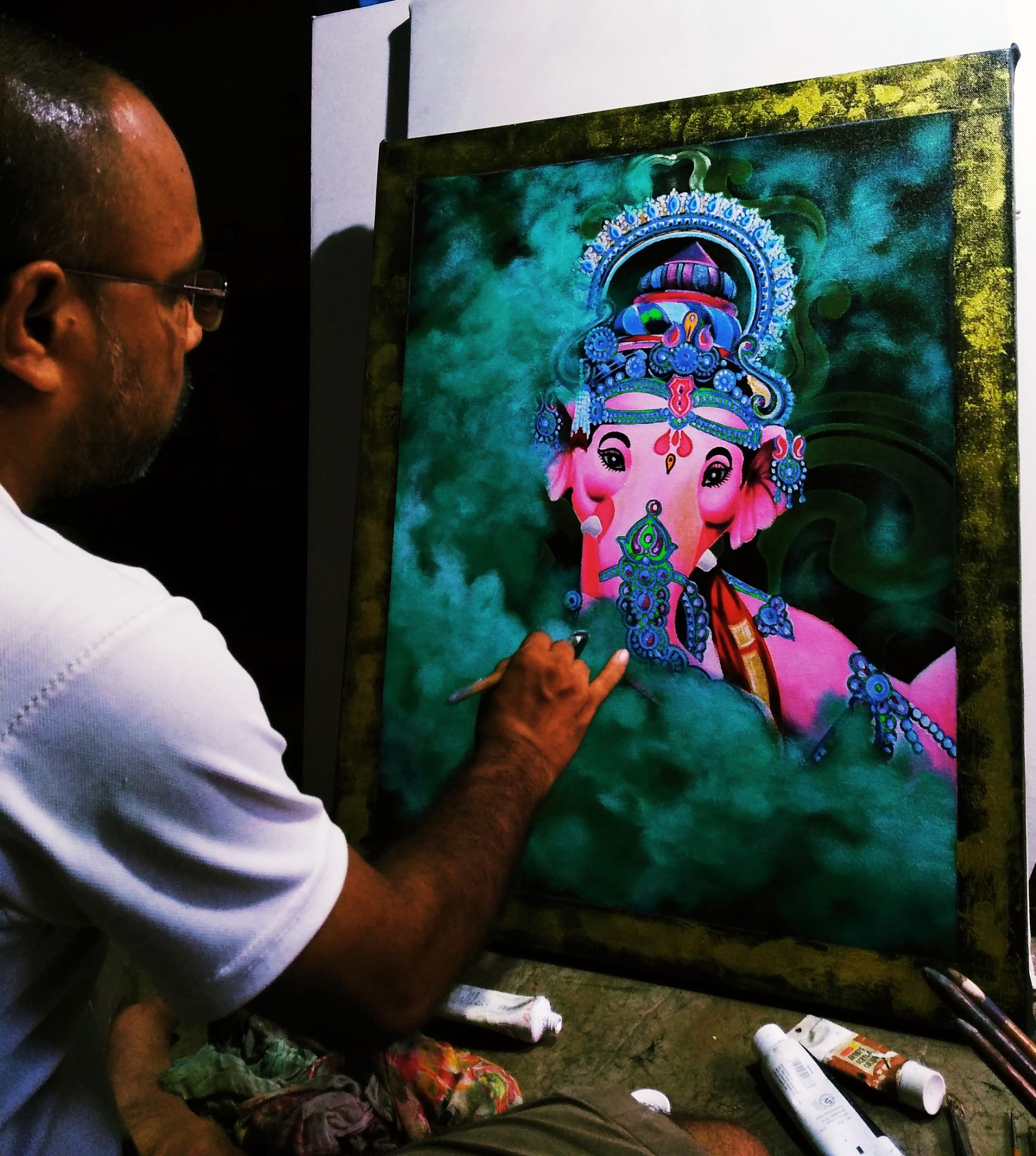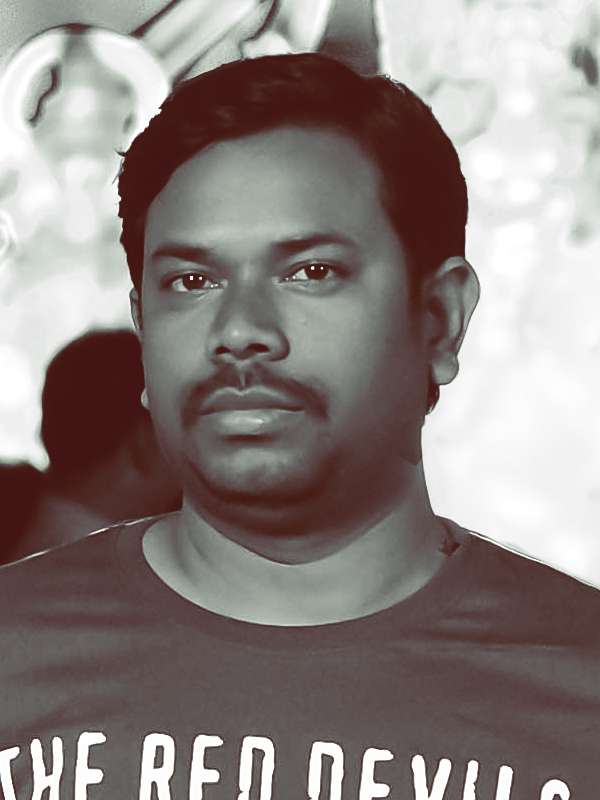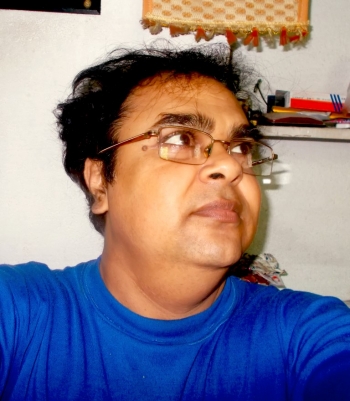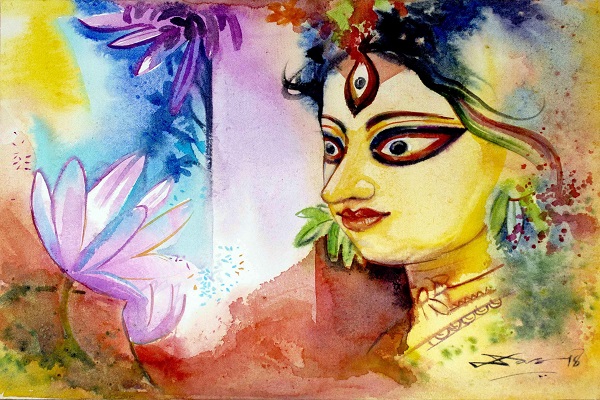
In Hindu mythology, Maa Durga holds a prominent place as a powerful and revered goddess. She is considered the embodiment of divine feminine energy and is widely worshipped across India and other parts of the world. The word "Durga" means "invincible" or "unattainable," signifying her invulnerable nature.
According to Hindu beliefs, Maa Durga is said to have been created by the combined energies of various gods and goddesses to defeat the buffalo demon, Mahishasura, who had unleashed chaos and terror on Earth. She is depicted as a ten-armed goddess, riding a lion or tiger, and wielding various weapons in her hands, symbolizing her formidable powers.
Maa Durga is not only associated with power and strength but also with compassion and motherly love. She represents the divine force that protects and nurtures life, destroying evil forces and restoring balance in the universe. Devotees seek her blessings for courage, prosperity, and spiritual upliftment.
The primary focus of this blog is to delve into the profound impact that Maa Durga paintings have on inspiring devotion and nurturing faith among her worshippers. Maa Durga's divine form and the various artistic representations of her have been a subject of admiration and inspiration for centuries.
Depiction of Maa Durga in Paintings
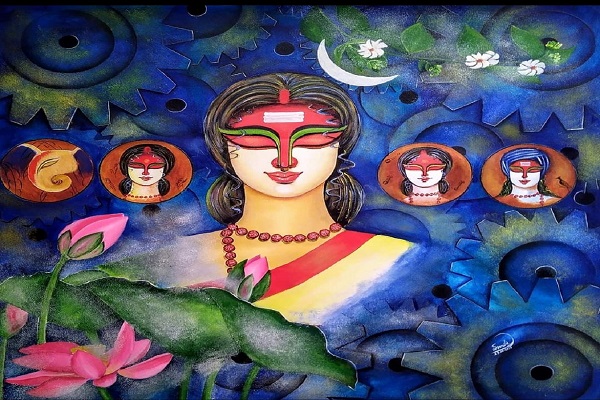
Maa Durga paintings are known for their rich symbolism and intricate details, each element carefully chosen to convey the essence of the goddess. Here are some of the common elements and symbols found in these paintings:
- Ten Arms: Maa Durga is typically depicted with ten arms, each holding a different weapon or symbol. These arms symbolize her immense power and ability to protect her devotees from all directions.
- Weapons: The various weapons held by Maa Durga represent her ability to combat evil forces and restore harmony. The most common weapons depicted include a trident (trishul), a sword (khadga), a discus (chakra), a bow and arrow (dhanush and bana), and a mace (gada).
- Lion/Tiger: Maa Durga is often depicted riding on a lion or a tiger. This animal symbolizes her fearlessness, courage, and strength. It also represents her control over the animal instincts within human beings.
- Third Eye: Maa Durga is sometimes depicted with a third eye on her forehead. This eye symbolizes her divine insight, wisdom, and ability to see beyond the visible world.
- Lotus: The lotus flower, often found in Maa Durga paintings, represents purity, enlightenment, and spiritual awakening. It signifies the blossoming of one's potential and the transcendence of worldly attachments.
- Halo: A halo or aura surrounding Maa Durga signifies her divine radiance and aura. It represents her transcendent nature and the divine energy that emanates from her.
Interesting Blog: Durga Paintings And Its Significance
Artistic Choices that Evoke a Sense of Divinity and Power
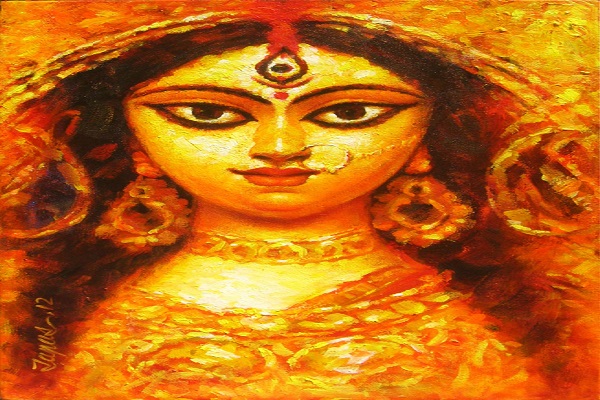
Maa Durga paintings employ various artistic choices to evoke a sense of divinity and power. These choices contribute to the overall impact and capture the essence of the goddess. Some key artistic elements include:
- Vivid Colors: Maa Durga paintings often feature vibrant and bold colors, such as red, orange, and gold. These hues symbolize energy, passion, and divinity. The use of vibrant colors adds visual impact and intensity to the artwork, reflecting the goddess's powerful presence.
- Dynamic Poses: The poses of Maa Durga in paintings are often dynamic and energetic, showcasing her fierce and active nature. She is depicted in various action-oriented stances, ready to confront and overcome obstacles. These poses communicate her readiness to protect and fight for her devotees.
- Intricate Details: Maa Durga paintings are characterized by intricate and meticulous details. The artist's attention to minute details, such as jewelry, ornaments, and facial expressions, adds depth and realism to the artwork. This level of detail reflects the devotion and craftsmanship involved in capturing the goddess's divine beauty.
- Divine Light: Many Maa Durga paintings depict a divine glow or radiance surrounding the goddess. This luminous light symbolizes her divine presence and the spiritual enlightenment she bestows upon her worshippers.
- Sacred Symbols: The inclusion of sacred symbols, such as Sanskrit mantras or verses from religious texts, further enhances the spiritual aura of Maa Durga paintings. These symbols serve as a reminder of the divine nature of the goddess and the sacredness of the artwork.
Emotional Connection and Symbolism

Maa Durga paintings have a profound ability to evoke a range of emotions in viewers, including awe, reverence, and devotion. Here's how these artworks achieve such a powerful emotional connection:
- Majestic Presence: Maa Durga is often depicted in paintings with a commanding and majestic presence. Her fierce expression, accompanied by her powerful stance and vibrant attire, immediately captures the attention of viewers. The sheer grandeur of her form and the aura of strength she emanates create a sense of awe and reverence.
- Divine Beauty: Maa Durga's divine beauty is often portrayed with meticulous attention to detail in paintings. The intricate adornments, ornate jewellery, and richly embellished garments highlight her elegance and grace. The sublime beauty of the goddess captivates viewers and elicits a sense of wonder and admiration.
- Emotional Expressions: Maa Durga paintings often depict a range of emotional expressions on the goddess's face, such as determination, compassion, and serenity. These expressions resonate with viewers, allowing them to connect with her on an emotional level. Devotees may feel a deep sense of comfort, solace, and empathy when they perceive the goddess's emotions reflected in the artwork.
- Dynamic Energy: The dynamic poses and action-oriented depictions of Maa Durga convey her active energy and fierce nature. These portrayals create a sense of empowerment and inspiration within viewers, igniting a surge of devotion and faith. The goddess's energy becomes contagious, and devotees feel encouraged to face challenges in their own lives with strength and determination.
Read More: Maa Durga Paintings - The Ultimate Representation Of The Goddess
Visual Storytelling and Mythological Narratives
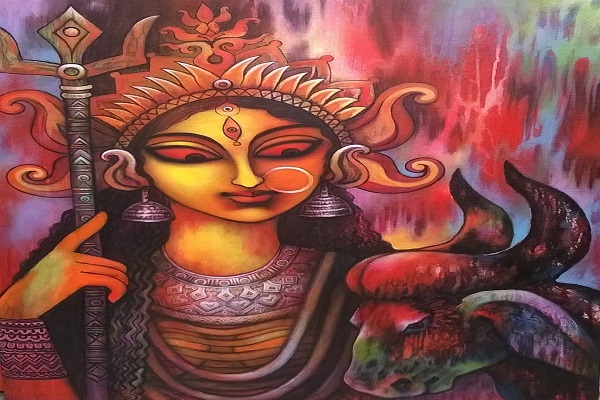
Maa Durga paintings serve as powerful visual storytellers, conveying mythological narratives and epics associated with the goddess. These artworks depict significant moments and events from Hindu mythology, particularly those related to Maa Durga's triumph over the buffalo demon, Mahishasura. Here's how these paintings bring these stories to life:
- Iconic Battle Scenes: Maa Durga paintings often portray the epic battle between the goddess and Mahishasura. These artworks depict the intense confrontation, showcasing Maa Durga's indomitable spirit and her eventual victory over the demon. The artist's skillful composition, dynamic poses, and use of vibrant colours capture the essence of the epic battle, immersing viewers in the mythological narrative.
- Divine Encounters: Paintings of Maa Durga often showcase her interactions with other deities and celestial beings. For example, she is often depicted in the company of Lord Shiva, Lord Vishnu, and other gods and goddesses who played a role in her creation. These artistic renderings help illustrate the interconnectedness of various divine entities and their collaboration in the battle against evil forces.
- Symbolic Elements: Maa Durga paintings incorporate symbolic elements to narrate mythological stories. These symbols may include weapons, animals, and mythical creatures associated with the goddess and the events of her mythological narrative. The strategic placement and depiction of these symbols guide viewers through the story, enabling them to engage with the narrative on a visual and symbolic level.
Meditative and Contemplative Qualities

Maa Durga paintings hold the potential to serve as powerful objects of meditation and contemplation. Here's how they facilitate these practices:
- Visual Focal Point: Maa Durga paintings provide a visually captivating focal point for meditation. The intricate details, vibrant colours, and divine form of the goddess draw the attention of the practitioner, helping to anchor their focus and concentration. By fixing their gaze upon the artwork, devotees can enter a meditative state with Maa Durga as the central point of their contemplation.
- Symbolic Significance: The symbolism present in Maa Durga paintings invites deeper contemplation. Each element, from the weapons she holds to the animals and symbols surrounding her, carries profound meaning. Practitioners can reflect on the symbolism and its implications in their own lives, gaining insights and spiritual understanding through this contemplative exploration.
- Sacred Atmosphere: Maa Durga paintings often find a place in temples, prayer rooms, or sacred spaces. Being in the presence of these artworks creates an environment conducive to meditation and contemplation. The sacredness of the surroundings, combined with the divine presence depicted in the paintings, helps practitioners create a serene and focused atmosphere for their introspective practices.
Also Check: Maa Durga Paintings: Ferocious and yet Charming
Final Thoughts
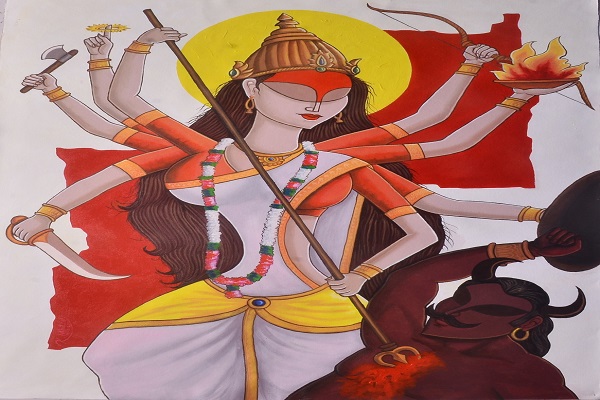
Maa Durga paintings have a profound impact on inspiring devotion and fostering faith. Their artistic beauty, symbolism, mythological narratives, and meditative qualities create a transformative experience for devotees. Through these artworks, individuals can develop a deep connection with Maa Durga, cultivating awe, reverence, and a sense of spiritual growth. To explore and acquire beautiful Lakshmi paintings and more Indian artworks, visit IndianArtIdeas, a platform dedicated to promoting Indian art and connecting art enthusiasts with talented artists.
May the divine grace of Maa Durga continue to inspire and nurture the devotion and faith of her devotees.












